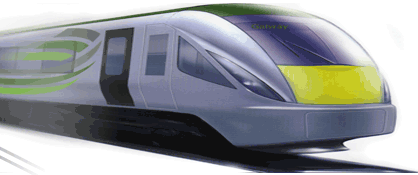|
|
West=On=Track
History
The Ballinrobe Railway Branch
By Tom Maye
Ballinrobe branch railway was authorised by an Act of Parliament in 1885. Midland and Great Western Railway had reached Claremorris in 1862. A group of local people proposed the "South Mayo Railway" in 1863, and this would have run from Claremorris to Cong and although a Bill was actually presented to parliament, it was later withdrawn.
The Tramways (Ireland) Act of 1883 was to encourage the laying of light railways in sparsely populated areas and in December of 1884, "The Ballinrobe & Claremorris Light Railway Co." was formally instituted.
Settling the contract for constitution was a difficult process. M.G.W.R. insisting on a high standard of building for the new line. There was also a suggestion that Tuam, not Claremorris, should be its junction point for Ballinrobe, but this was not pursued. "Worthington" was awarded the contract and construction began in October 1892.
Ballinrobe was now the terminus, even though many prominent people were pressing to have the line extended to Cong. They were making the case that this would bring access for tourist to the magnificent scenic beauty of North Connemara. This proposal was shelved when the Galway-Clifden line was mooted. Nevertheless Ballinrobe proved to be a popular base, for in addition to enhancing the status of the town; it was an outstanding facility for the local community. It also proved popular for visiting tourists, sightseers, anglers etc; as well as outgoing passengers.
In fact it is doubtful if Guinness would have developed Ashford Castle were it not for the connecting rail service. There was regular transfer of tourists and VIPs from the station to the castle. Among these was the visit in June 1912 of The Prince of Wales, later he became King George V of England. Pictures of this visit can be seen in Ashford Castle.
During its years in existence the Ballinrobe branch served the community well. It had probably the largest livestock forwarding of any station in the west. In the November fair, prior to the station's closure, 85 wagons of livestock were booked out. In addition to sundries traffic, it also handled Guinness, manure, cement, coal, flour, masonry, beet, pulp, timber, and fish. Live eels from Des May's eel fishery were dispatched on the 10:10 morning train, to arrive in London the following morning.
Ballinrobe town deliveries were done by horse-drawn float and drivers at various times were, Davy Murphy, Jim Monaghan, Michael Coyne, and Stephen Burke. There were also road deliveries from the railhead to outlying areas. Drivers Jim Brennan and Harry Gilmore provided this service. The station was also a major base for ground limestone delivery and during the season there were 10 or 12 lorries to service the lime plants in Cong and Partry. Local drivers operating these were Jim Monaghan, Paddy Greaney, Christy Callinane. Additional drivers were drafted in from Galway when required.
In October 1959, notices appeared in the daily papers announcing that after December all services on the Claremorris/Ballinrobe branch would be discontinued. This announcement resulted in many protests. Public representatives, local traders, livestock buyers and exporters pledged support. Appeals to the Government to grant a reprieve were rejected, pointing out that the loss for the last financial year was £31 ,000. This figure probably included the cost of work done on bridges over the Robe and Bulkawn rivers, work done on culverts and level crossing gates, station premises and track refurbishment all done that year.
During the station's operation there were no major accidents or fatalities. It was sad to see the Branch, which had played a major role in the socio-economic development of Ballinrobe, slowly die an untimely death. At the time of its demise, there were total staffs of 16 employed on the branch. The Station Master was Bill Clinton, (probably no relation of his more famous namesake), clerk Tom Maye, railwaymen Michael Hughes, Stephen Burke and Tom Veldon. Permanent way staff included Gerry Dwyer, Inspector, Pake O'Brien ganger, and Hugh & Pat Caulfield. The station closed on December 31st 1959. The last train was operated by drivers Jack Monaghan and Hughie Dawson, with Michael Higgins as guard.
On that night, (New Years Eve) there was a farewell get together for the staff, in the Railway Hotel, Ballinrobe, where there were many fond reminiscences of times past. The event was recorded by Patsy Shaughnessy, and was subsequently broadcast by Radio Éireann. It finished with much nostalgia and there was a final rendition of the song "Tonight is our last night together" fronted by quality singers Michael Coyne and Frank Donnelly. And so it was ...
It was the end of an era.
This article appeared in the Cong parish magazine, Cunga 2008
© Tom Maye / Cunga 2008
|
|
